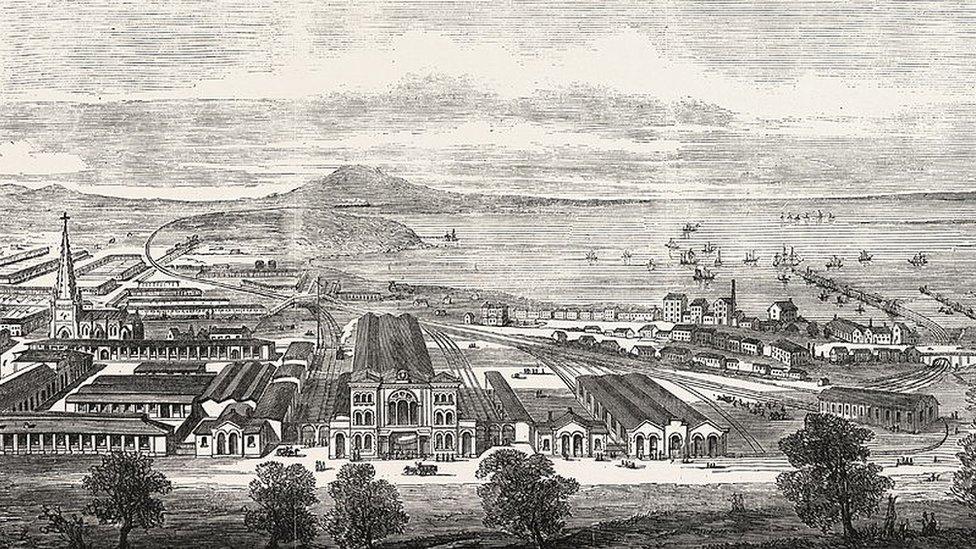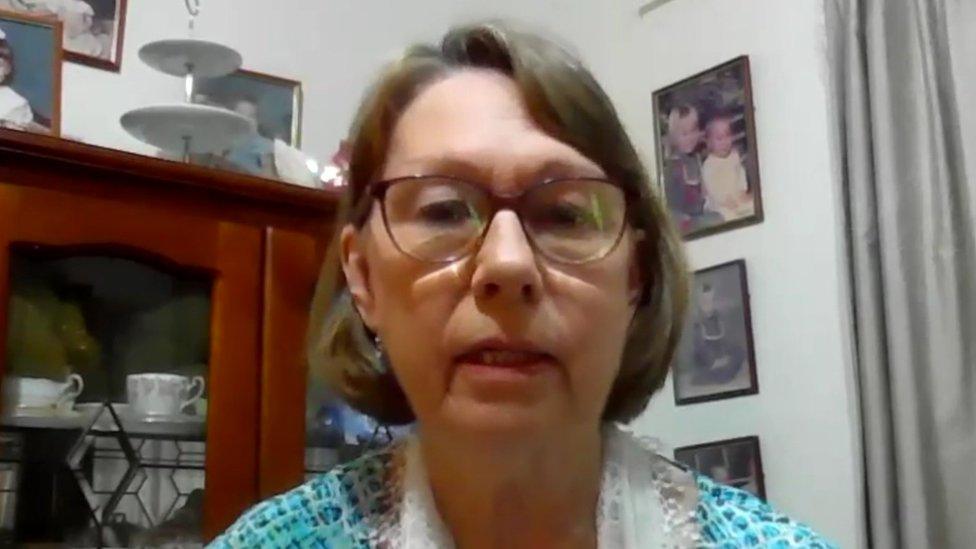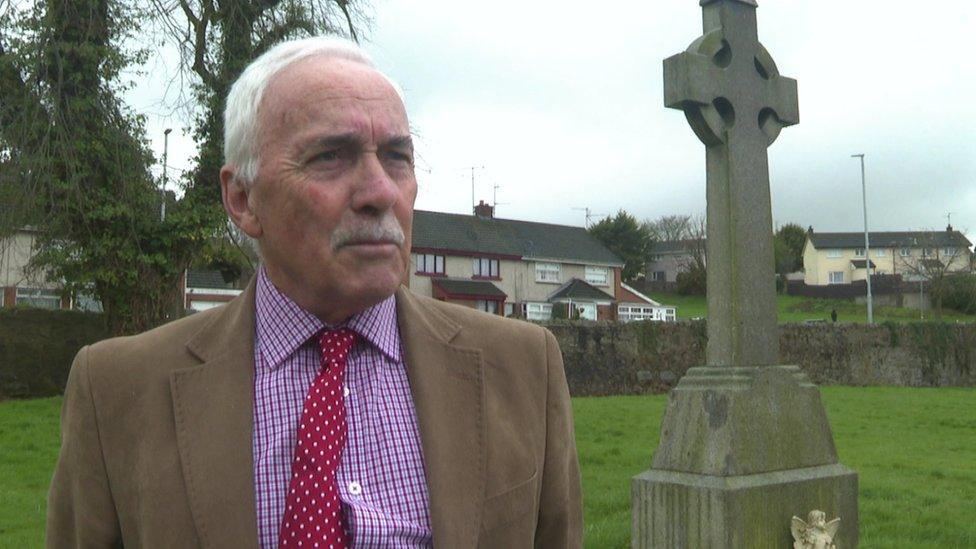The young girls shipped from Newry Workhouse to Australia
- Published

Melbourne looked something like this when young Irish orphans arrived
Between 1848 and 1850 more than 4,000 young Irish female orphans left workhouses and were transported to Australia.
It was part of what was known as the Earl Grey Scheme.
He was secretary of state for the colonies and the aim of the scheme was to reduce overcrowding in workhouses and provide labour for Australia whilst reducing a big gender imbalance there.
Thirty-five of the girls were from Newry.
They are now the subject of a new exhibition at the city's library.
Among the girls who left Newry workhouse was Lucy Ellis.
She was 16 when she travelled on the Derwent and she arrived in Melbourne on 25 February 1850.
"They come to Australia and they had to be inspected by the immigration officer before they come ashore," said Sue Jacques, the great-great-granddaughter of Lucy.
"They make their way to a depot where they stay. Employers come to the depot. Lucy was employed by a Mr George Hollis.
"Can you imagine coming to a land far, far away when you are 16?
"It was probably in a horse and cart that his man came down to collect her so you are really at their mercy.
"I'm really hoping that she was treated quite well. I feel she must have been treated reasonably well or she wouldn't have prospered the way she did."

Lucy's great-great-granddaughter hopes her ancestor was treated well
And prosper she did. Within a year Lucy married.
She had nine children and when she died of influenza in her late 50s it was in her own home, which still stands.
The Newry exhibition has been curated by historian Hugh McShane.
He said many of the girls who left workhouses would have felt they had nothing to lose.
"Conditions in the workhouse by 1848, which was at the peak of the famine, were absolutely dire," he said.
"I suppose this was one of the incentives for the girls to take up the option of moving to a faraway land that they knew nothing about.
"Newry workhouse had been built for 1,000 inmates as they were called - but by 1848 there were 1,500.
"There was a great deal of disease and a high mortality rate. It was either go to Australia or probably die in the workhouse.
"It was a long journey. It began here in Newry. They travelled to Dublin then to Plymouth by steamship and then they embarked upon a three-month journey to Australia."

Hugh McShane curates the exhibition
As part of the exhibition special bonnets have been made with the names of each of the Newry girls to make the journey.
The ship they sailed on is also listed and the date of their arrival in Australia.
Mr McShane said he hoped the exhibition would ensure their stories are not forgotten.
"There is a saying that we die once, but if we die unremembered we die twice," he said.
"For those 35 girls, the majority of them drifted into obscurity.
"Some of them may have prospered some of them may not. But we do know from some of those girls we were able to identify that their lives were changed for the better.
"That they had a good life and some lived to a great age. And that when you consider the 4,000 orphans, their descendants now form more than 1,000,000 of the current Australian population."
The Newry exhibition runs throughout April.